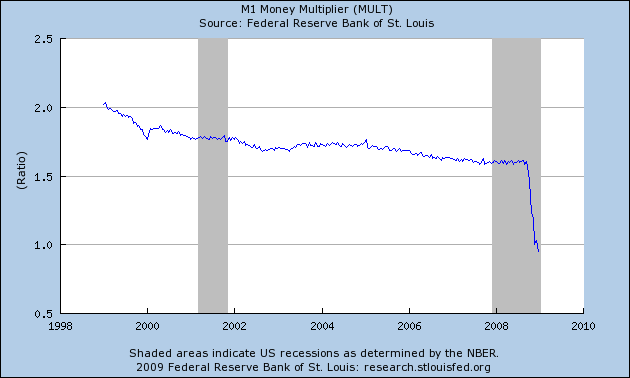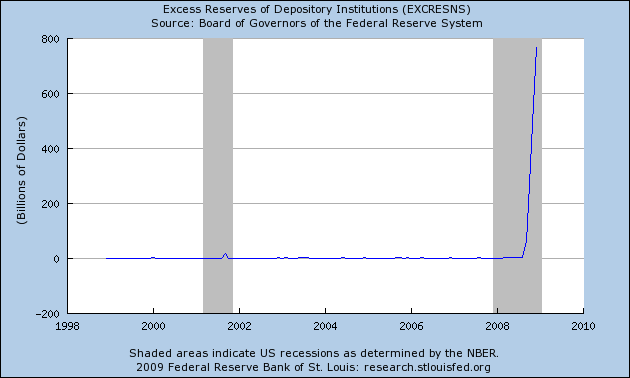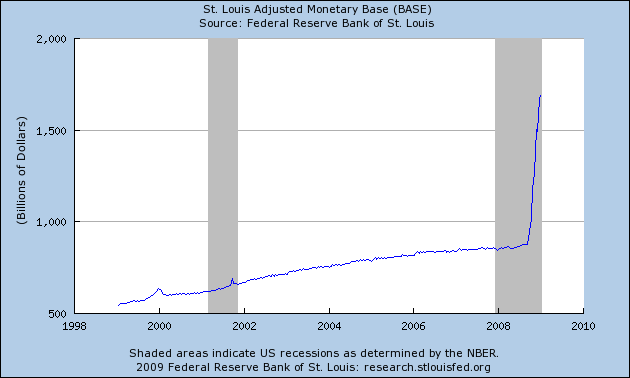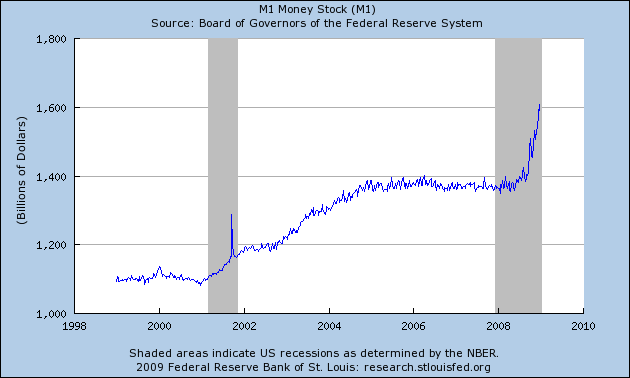Okay. First, a correction: There is (of course) a market for CDOs and other such derivatives at the moment. You can sell them if you want. It’s just that the prices that buyers are willing to pay is below what the holders of CDOs are willing to accept.
So, here are a few thoughts on estimating the underlying, or “fair,” value of a CDO:
Method 1. Standard asset pricing considers an asset’s value to be the sum of the present discounted value of all future income that it generates. We discount future income because:
- Inflation will mean that the money will be worth less in the future, so in terms of purchasing power, we should discount it when thinking of it in today’s terms.
- Even if there were no inflation, if we got the money today we could invest it elsewhere, so we need to discount future income to allow for the (lost) opportunity cost if current investment options generate a higher return than what the asset is giving us.
- Even if there were no inflation and no opportunity cost, there is a risk that we won’t receive the future money. This is the big one when it comes to valuing CDOs and the like.
- Even if there’s no inflation, no opportunity cost and no risk of not being paid, a positive pure rate of time preference means that we’d still prefer to get our money today.
The discounting due to the risk of non-payment is difficult to quantify because of the opacity of CDOs. The holders of CDOs don’t know exactly which mortgages are at the base of their particular derivative structure and even if they did, they don’t know the household income of each of those borrowers. Originally, they simply trusted the ratings agencies, believing that something labeled “AAA” would miss payment with probability p%, something “AA” with probability q% and so on. Now that the ratings handed out have been shown to be so wildly inappropriate, investors in CDOs are being forced to come up with new numbers. This is where Knightian Uncertainty is coming into effect: Since even the risk is uncertain, we are in the Rumsfeldian realm of unknown unknowns.
Of course we do know some things about the risk of non-payment. It obviously rises as the amount of equity a homeowner has falls and rises especially quickly when they are underwater (a.k.a. have negative equity (a.k.a. they owe more than the property is worth)). It also obviously rises if there have been a lot of people laid off from their jobs recently (remember that the owner of a CDO can’t see exactly who lies at the base of the structure, so they need to think about the probability that whoever it is just lost their job).
The first of those is the point behind this idea from Chris Carroll out of NYU: perhaps the US Fed should simply offer insurance against falls in US house prices.
The second of those will be partially addressed in the future by this policy change announced recently by the Federal Housing Finance Agency:
[E]ffective with mortgage applications taken on or after Jan. 1, 2010, Freddie Mac and Fannie Mae are required to obtain loan-level identifiers for the loan originator, loan origination company, field appraiser and supervisory appraiser … With enactment of the S.A.F.E. Mortgage Licensing Act, identifiers will now be available for each individual loan originator.
“This represents a major industry change. Requiring identifiers allows the Enterprises to identify loan originators and appraisers at the loan-level, and to monitor performance and trends of their loans,” said Lockhart [, director of the FHFA].
It’s only for things bought by Fannie and Freddie and it’s only for future loans, but hopefully this will help eventually.
Method 2. The value of different assets will often necessarily covary. As a absurdly simple example, the values of the AAA-rated and A-rated tranches of a CDO offering must provide upper and lower bounds on the value of the corresponding AA-rated tranche. Statistical estimation techniques might therefore be used to infer an asset’s value. This is the work of quantitative analysts, or “quants.”
Of course, this sort of analysis will suffer as the quality of the inputs falls, so if some CDOs have been valued by looking at other CDOs and none of them are currently trading (or the prices of those trades are different to the true values), then the value of this analysis correspondingly falls.
Method 3. Borrowing from Michael Pomerleano’s comment in rely to Christopher Carroll’s piece, one extreme method of valuing CDOs is to ask at what price a distressed debt (a.k.a. vulture) fund would be willing to buy them at with the intention of merging all the CDOs and other MBSs for a given mortgage pool so that they could then renegotiate the debt with the underlying borrowers (the people who took out the mortgages in the first place). This is, in essense, a job of putting Humpty Dumpty back together again. Gathering all the CDOs and other MBSs for a given pool of mortgage assets will take time. Identifying precisely those mortgage assets will also take time. There will be sizable legal costs. Some holders of the lower-rated CDOs may also refuse to sell if they realise what’s happening, hoping to draw out some rent extraction from the fund. The price that the vulture fund would offer on even the “highly” rated CDOs would therefore be very low in order to ensure that they made a profit.
It would appear that banks and other holders of CDOs and the like are using some combination of methods one and two to value their assets, while the bid-prices being offered by buyers are being set by the logic of something like method three. Presumably then, if we knew the banks’ private valuations, we might regard the difference between them and the market prices as the value of the uncertainty.



